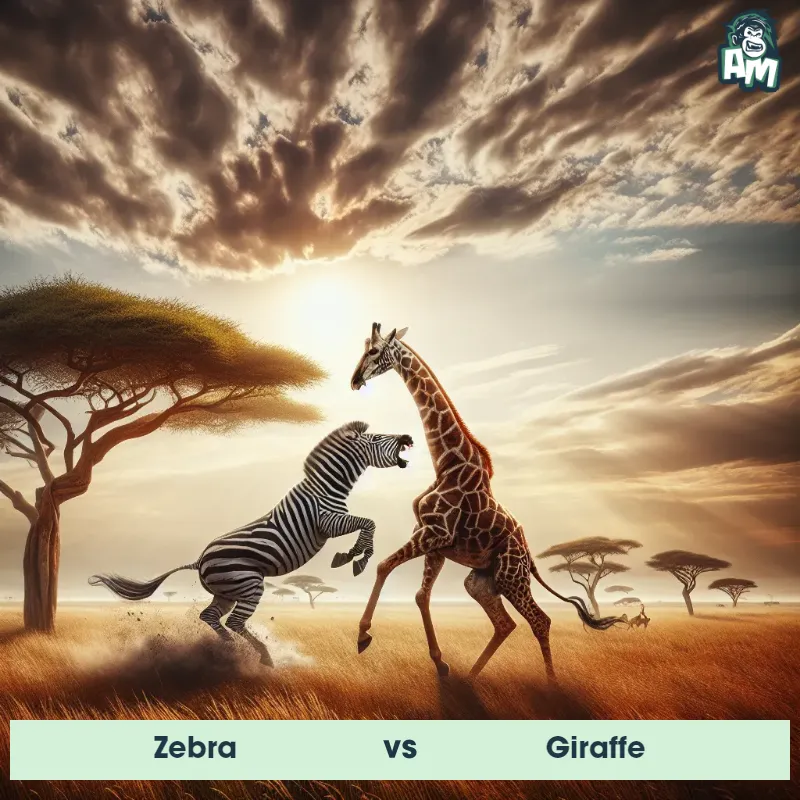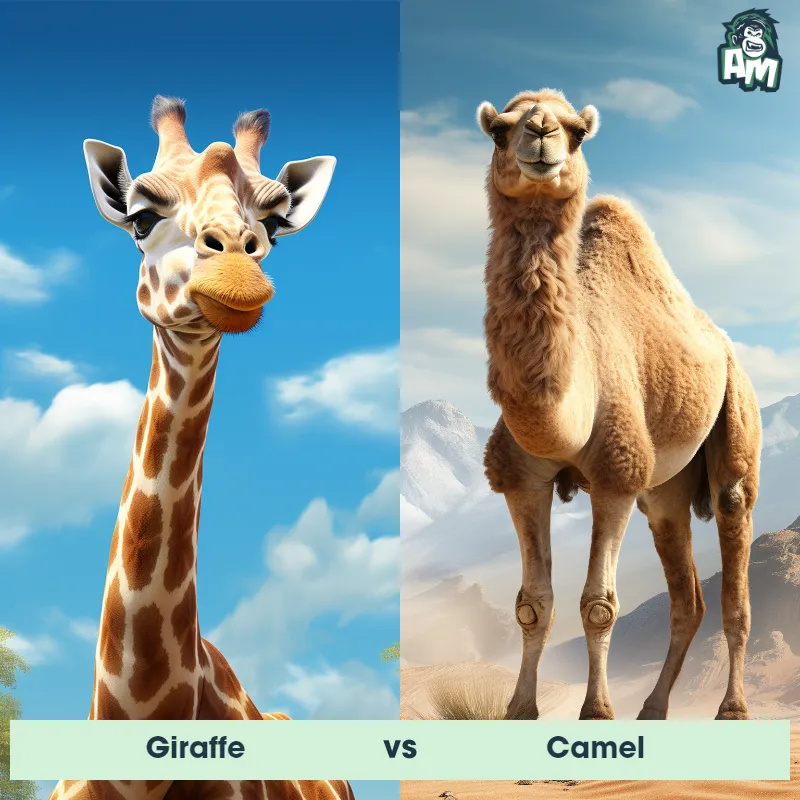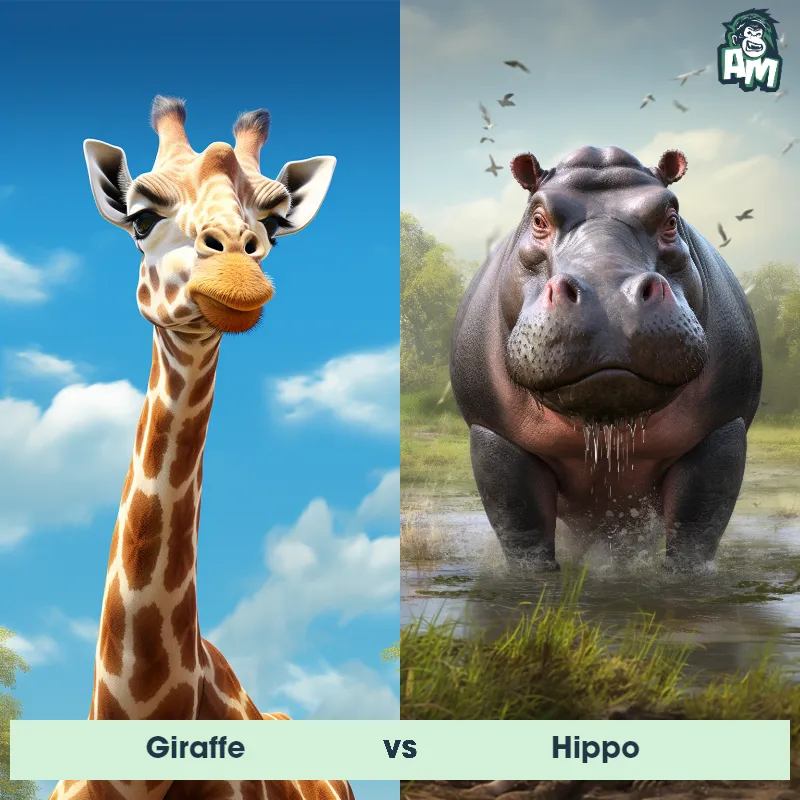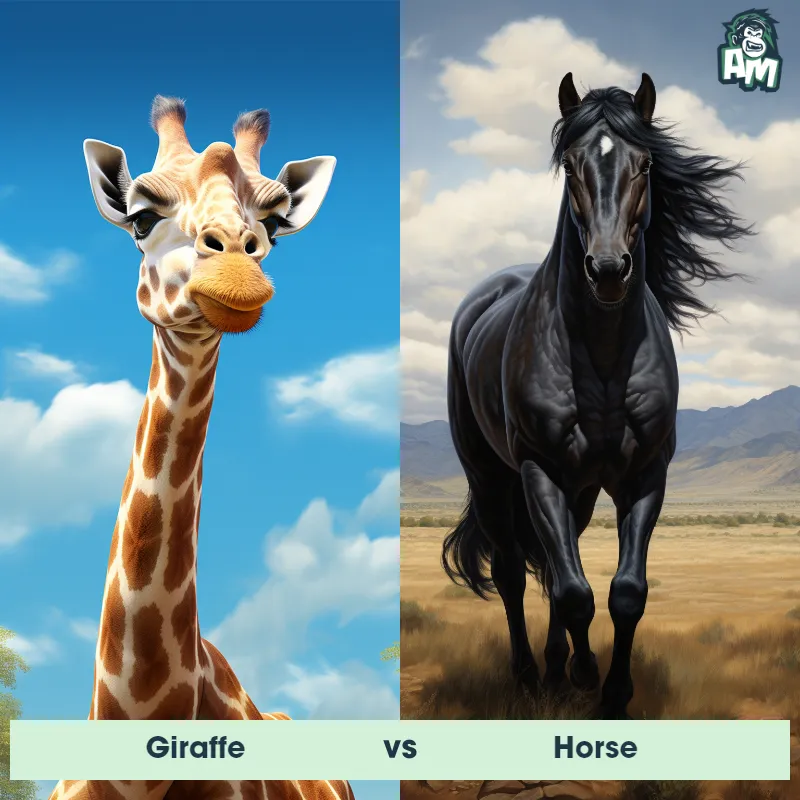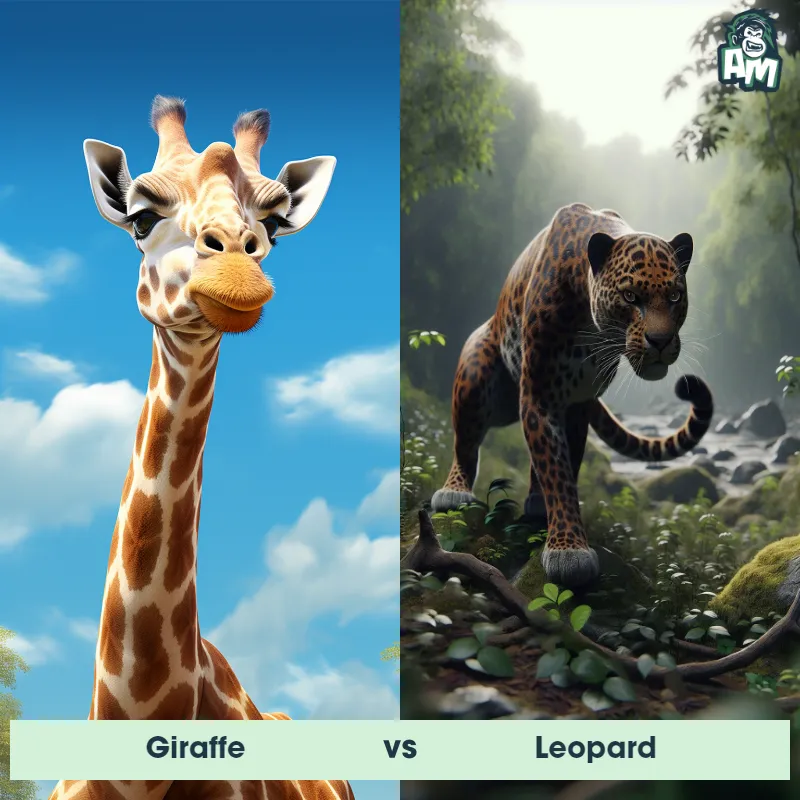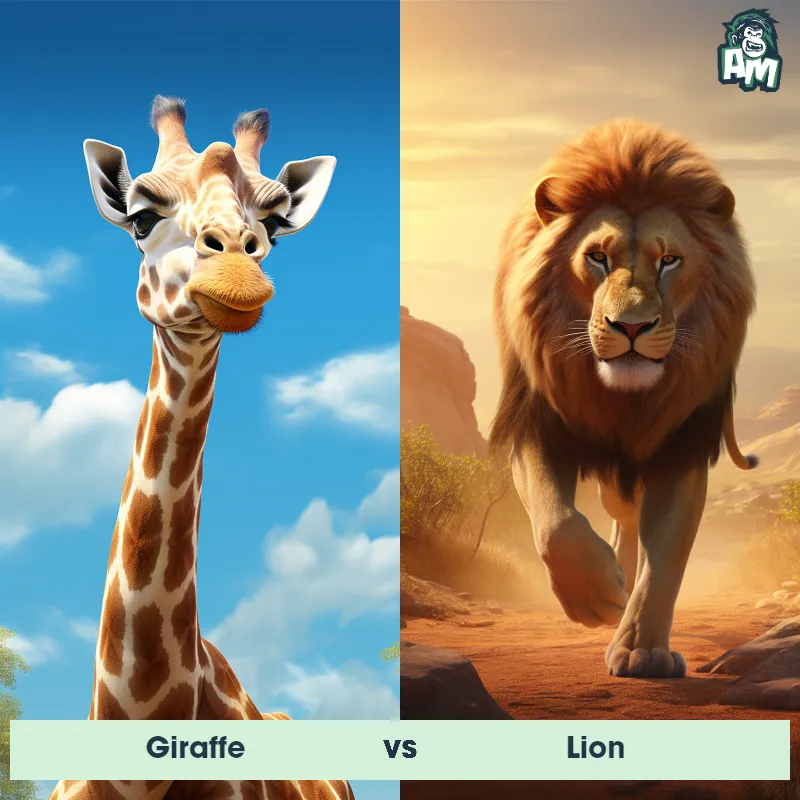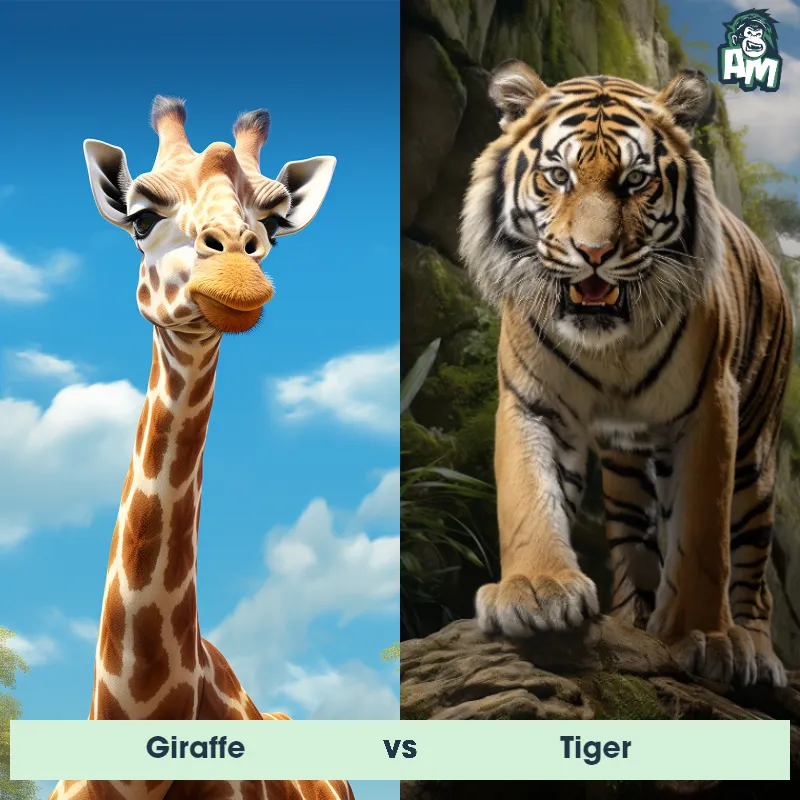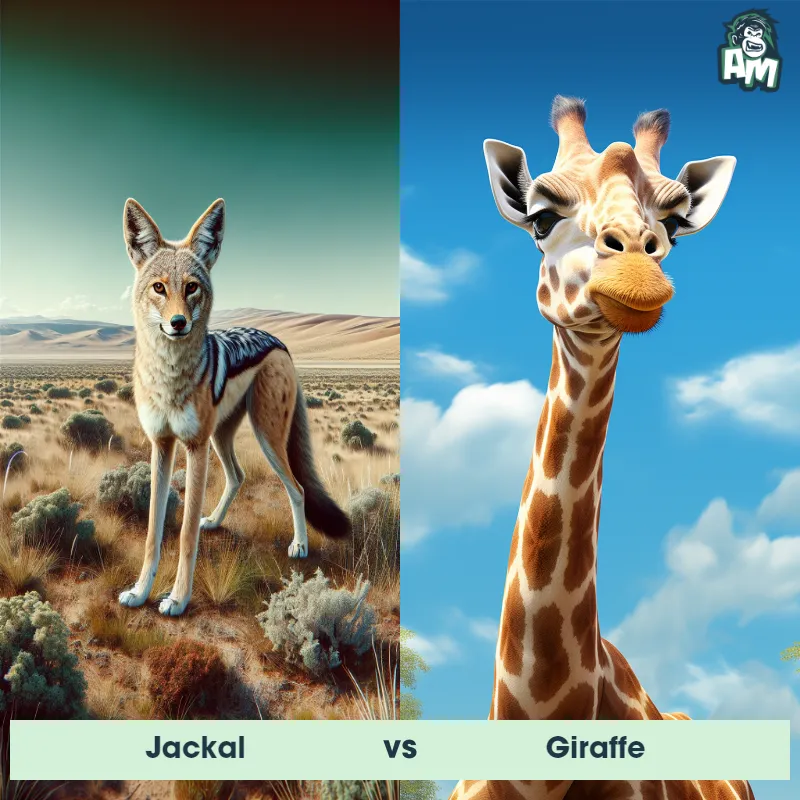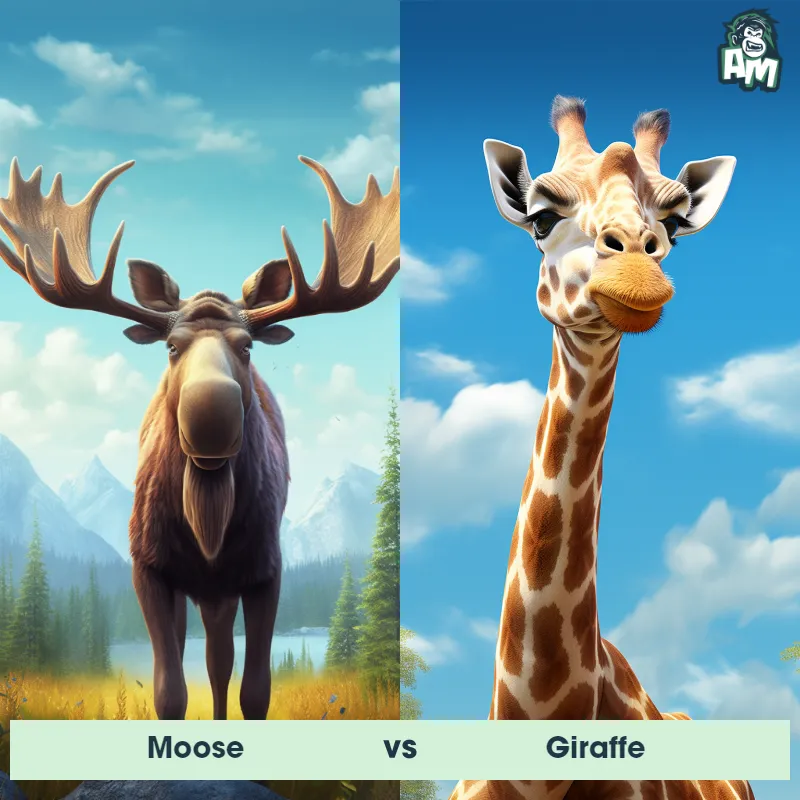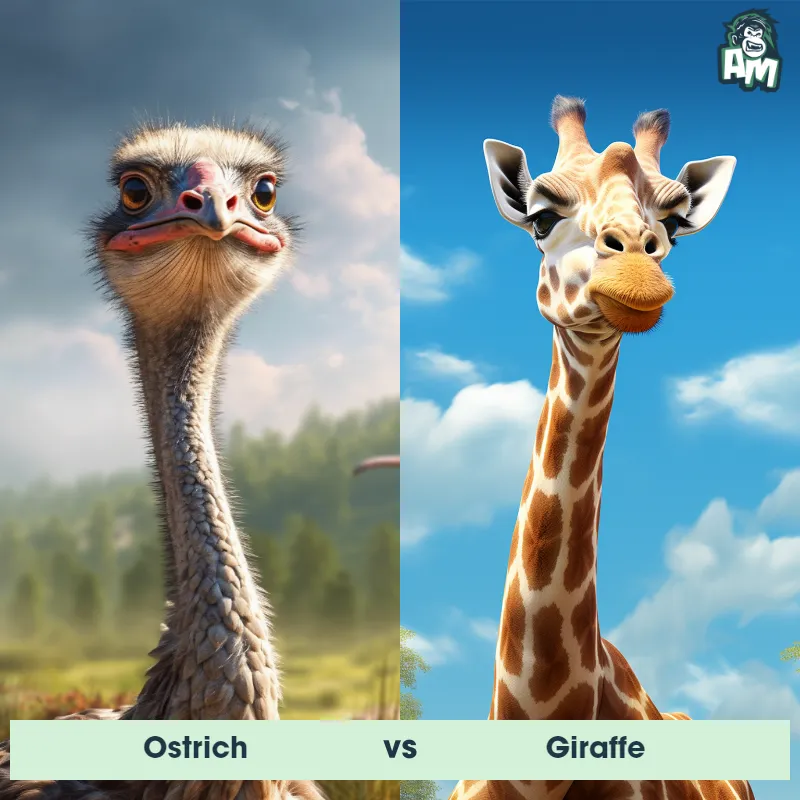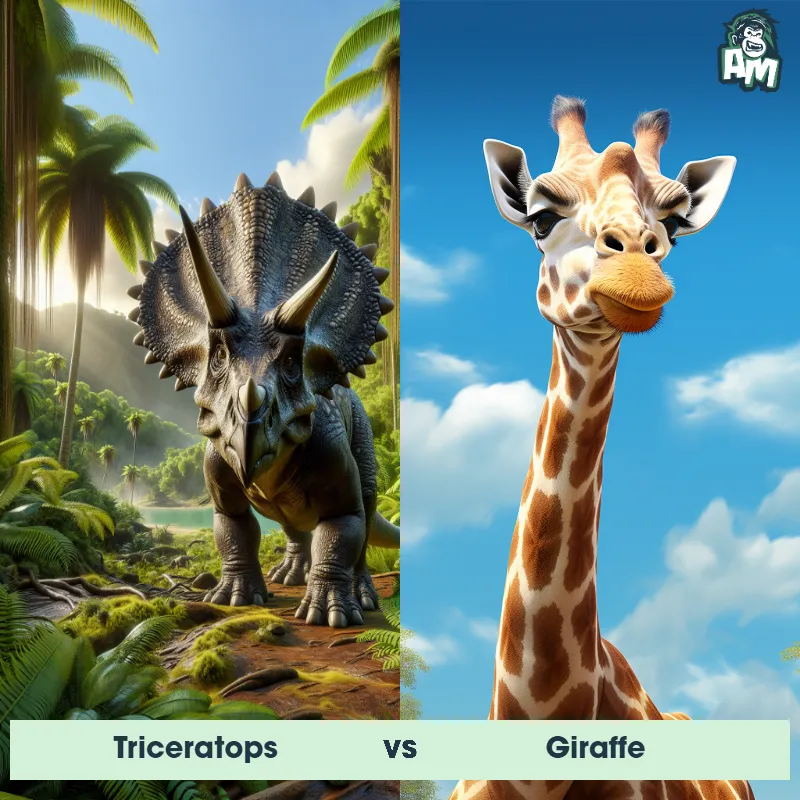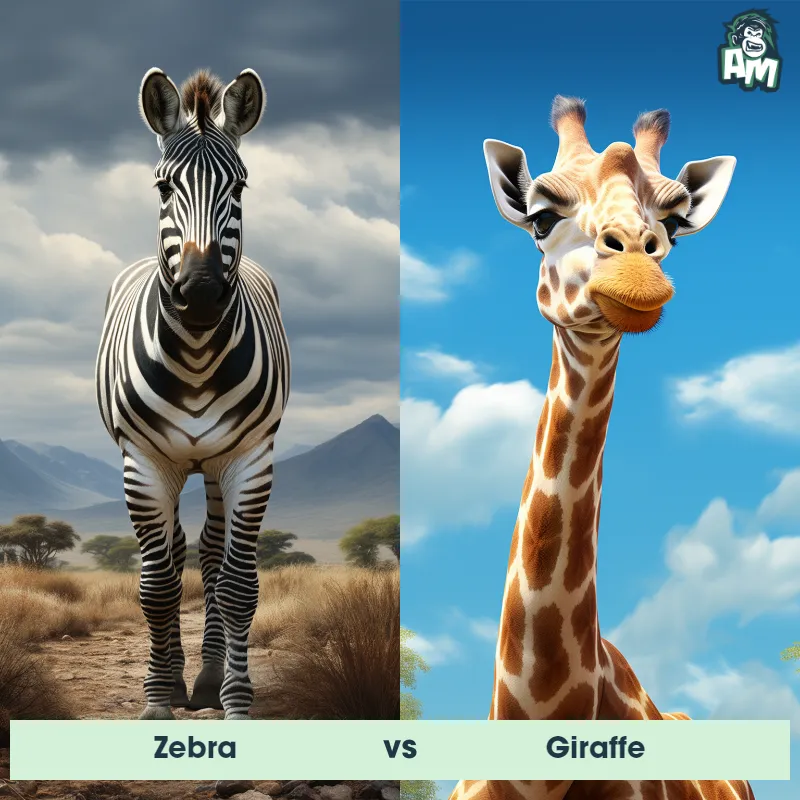The Giraffe
The Giraffe, also known as Giraffa camelopardalis, is a fascinating creature that stands as the tallest living land animal, with males reaching heights of up to 18 feet. Its most noticeable feature is its long neck, which can stretch up to six feet in length, allowing it to reach food high above the ground. Giraffes have a distinctive coat pattern, with orange-brown patches separated by white lines, which help them camouflage in their natural habitat. They possess long legs and ossicones, which are bony protrusions on their heads. Giraffes are herbivorous animals that primarily feed on leaves and buds from acacia trees, and they rely on their incredible eyesight and acute hearing to detect potential predators.

| Giraffe | |
|---|---|
| Size | Up to 18 feet tall (5.5 meters) |
| Weight | Up to 2,800 pounds (1,270 kilograms) |
| Speed | 35mph (56km/h) |
| Key Strength | Powerful kicks with their long legs |
| Biggest Weakness | Vulnerable when bending down to drink water |
| Scientific Name | Giraffa camelopardalis |
| Family | Giraffidae |
| Habitat | Savannahs, grasslands, and open woodlands |
| Geography | Africa |
| Diet | Herbivorous, primarily leaves, fruits, and flowers |
| Lifespan | 20 years - 25 years |

The Giraffe
The Giraffe, also known as Giraffa camelopardalis, is a fascinating creature that stands as the tallest living land animal, with males reaching heights of up to 18 feet. Its most noticeable feature is its long neck, which can stretch up to six feet in length, allowing it to reach food high above the ground. Giraffes have a distinctive coat pattern, with orange-brown patches separated by white lines, which help them camouflage in their natural habitat. They possess long legs and ossicones, which are bony protrusions on their heads. Giraffes are herbivorous animals that primarily feed on leaves and buds from acacia trees, and they rely on their incredible eyesight and acute hearing to detect potential predators.
Fun Fact: The Giraffe's long neck not only aids them in reaching tall trees but also serves as an incredible weapon – they engage in fierce neck-to-neck battles using their necks as clubs, swinging them against their opponent with remarkable force.
| Giraffe | |
|---|---|
| Size | Up to 18 feet tall (5.5 meters) |
| Weight | Up to 2,800 pounds (1,270 kilograms) |
| Speed | 35mph (56km/h) |
| Key Strength | Powerful kicks with their long legs |
| Biggest Weakness | Vulnerable when bending down to drink water |
| Scientific Name | Giraffa camelopardalis |
| Family | Giraffidae |
| Habitat | Savannahs, grasslands, and open woodlands |
| Geography | Africa |
| Diet | Herbivorous, primarily leaves, fruits, and flowers |
| Lifespan | 20 years - 25 years |
Match Highlights
Giraffe Matchups
We use AI to simulate matchups between the Giraffe and other animals. Our simulation considers size, strength, and natural predatory behaviors to determine the most likely outcome.
Giraffe: Diet, Predators, Aggression, and Defensive Behaviors
What do Giraffes eat?
Giraffes are herbivores and primarily feed on leaves, twigs, fruits, and flowers from acacia trees. They have a long prehensile tongue that helps them strip leaves from branches, and their height allows them to reach the uppermost leaves that other animals cannot.
Do Giraffes have any predators?
While adult Giraffes are relatively safe from predators due to their height and powerful kicks, young Giraffes are vulnerable to predators such as lions, hyenas, and crocodiles. They are also susceptible to attacks from humans for meat and body parts.
Are Giraffes aggressive?
Giraffes are typically gentle and non-aggressive animals, but they can become aggressive if threatened or provoked. Male Giraffes may exhibit aggressive behavior during mating season when competing for females, using their necks to deliver powerful blows.
Do Giraffes fight?
Male Giraffes engage in necking, a behavior where they swing their necks and heads at each other in a show of dominance. This ritualistic fighting is not usually intended to cause harm but rather establish dominance and hierarchy within the group.
How do Giraffes defend themselves?
Giraffes have several defense mechanisms to protect themselves from predators. Their long legs allow them to run at speeds of up to 35 miles per hour, and they can deliver powerful kicks with their hooves. Additionally, their long necks enable them to spot predators from afar and their powerful tails can be used as a whip.
What is the biggest weakness of Giraffes in a fight?
Despite their height and powerful kicks, the Giraffe's biggest weakness in a fight is their relatively slow movement and inability to make quick turns. This makes them vulnerable to swift and agile predators that can outmaneuver them in close combat situations.
Fun Fact: Despite their towering height, Giraffes only require a mere 30 minutes to an hour of sleep each day, which is often split into short naps, as they are vulnerable to predation while at rest.
Fun Fact: Giraffes have an unusually long, black tongue that can measure up to 18 inches in length, enabling them to grasp and strip leaves from branches with ease, making it an incredibly efficient tool for foraging.



